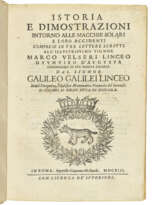ID 993310
Lot 129 | GALILEI, Galileo (1564-1642)
Estimate value
£ 30 000 – 50 000
Sidereus, Nuncius Magna, Longeque admirabilia Spectacula pandens... Apprime vero in Quatuor Planetis circa Iovis Stellam disparibus. Frankfurt: [Zacharias] Palthenius, 1610. [Bound with:] KEPLER, Johannes (1571-1630). Dissertatio cum Nuncio Sidereo nuper ad mortales misso à Galilaeo Galilaeo. Frankfurt: Zacharias Palthenius, 1611.
The first publication of Galileo's magnum opus outside of Italy; the first to contain illustrations of the stars printed on a black background, and not on white, an innovation that was welcomed with great enthusiasm, becoming the model for subsequent editions. This is the second edition of the Sidereus Nuncius, published only a few months after the original printed in Venice. It contains Galileo’s first astronomical discoveries made using the telescope, and describes the Milky Way (‘Pleiades’), the moons of Jupiter, and gives details of the moon. This second edition, like the original of 10 March 1610 (which sold out within a few weeks), is dedicated to Cosimo de' Medici. Printed in haste and without permission from its author, this pirated edition differs from the original, not only with its smaller format, but also in its composition. The engravings here are made on wood and not on copper, and the figures of the moon are not in the correct order. This copy also contains the rare pamphlet written by Johannes Kepler, also published by Zacharia in Frankfurt, in which he gives an appreciation of Galileo's work. This Frankfurt edition, the third after those of Prague and Florence in 1610, is also a pirated printing.
The provenance of this copy is also extremely interesting. It is probably the copy of the astronomer Jean-Paul Grandjean de Fouchy (1707-1788), member of the Académie royale d'astronomie. He was assistant astronomer from 1731, and then appointed secretary on 2 September 1743, and then director of the academy from 1770. Grandjean de Fouchy is the author of numerous papers in Histoire de l'académie des Sciences, including works on the satellites of Jupiter (1734), eclipse of the moon (1733), and observations on the passage of Mercury across the face of the sun (1736). Galileo: Carli & Favaro 31; Cinti 28; Dibner, Heralds 7n; Zinner 4271; Kepler: Caspar 37; Carli & Favaro 34; Zinner 4319.
2 works in one, small octavo (162 x 95mm). Galileo: Collation: A-C8 D4. Woodcut device on title, 7 woodcuts in the text including illustrations of the moon, woodcut headpieces and decorative initials, four woodcut plates on three sheets titled ‘Pleiades’, ‘Cinculi et Ensis Orionis Asterismus’, ‘Nebulosa Orionis’ and ‘Nebulosa Praesepes’ (lightly browned, the plates cropped with loss of the first two headlines and partial loss of the last, but no loss to the star images). Kepler: Collation: A-C8 D4 (lightly browned, without final blank). Contemporary vellum, later paper label on spine with manuscript title (extremities rubbed, small split with a little loss to spine). Provenance: Père Godin (ownership inscription on title and endpaper and ‘ex-dono’ dated 1730) — Grandjean (ownership inscription on title) — École Sainte Geneviève, BDJ (stamp on title) — Dom. S. Aloys. Jerseiens, S.J (ink stamp on front free endpaper; the library was transferred from Jersey in 1949 to;) — Bibliothèque des Jésuites, Chantilly (stamp, sale in Paris, November 1984) — sold Christie’s Paris 21 April 2010, lot 29.
Special notice
No VAT is payable on the hammer price or the buyer's premium for this lot. Please see the VAT Symbols and Explanation section of the Conditions of Sale for further information
| Artist: | Galileo Galilei (1564 - 1642) |
|---|---|
| Place of origin: | Western Europe, Germany, Europe |
| Auction house category: | Printed books |
| Artist: | Galileo Galilei (1564 - 1642) |
|---|---|
| Place of origin: | Western Europe, Germany, Europe |
| Auction house category: | Printed books |
| Address of auction |
CHRISTIE'S 8 King Street, St. James's SW1Y 6QT London United Kingdom | |
|---|---|---|
| Preview |
| |
| Phone | +44 (0)20 7839 9060 | |
| Buyer Premium | see on Website | |
| Conditions of purchase | Conditions of purchase |
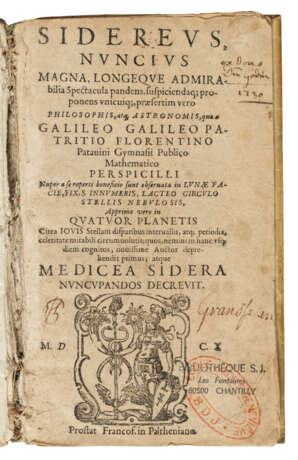
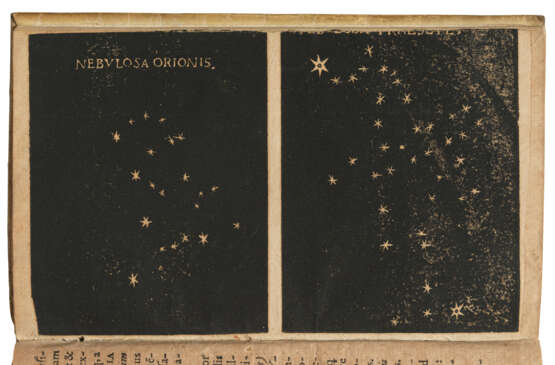
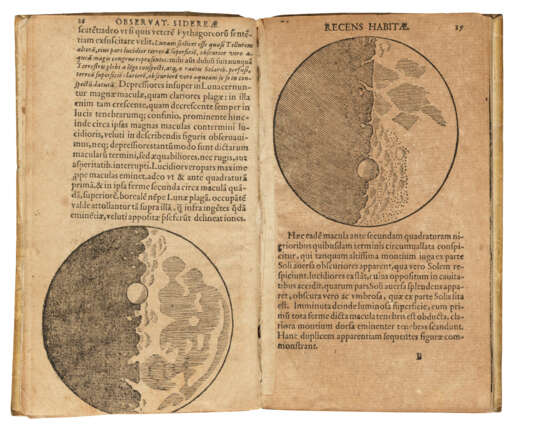
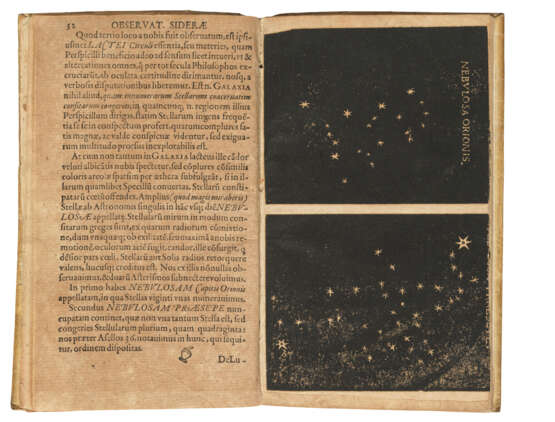

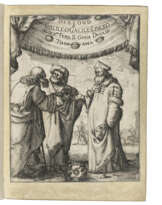




![[GALILEO GALILEI (1564-1642) and Girolamo SPINELLI (c.1580-1647)]](/assets/image/picture_4734998/81ecb/b78ba02793ea9f7c89bc2421c803edfc1752012000jpg__fix_162_205.jpeg)
